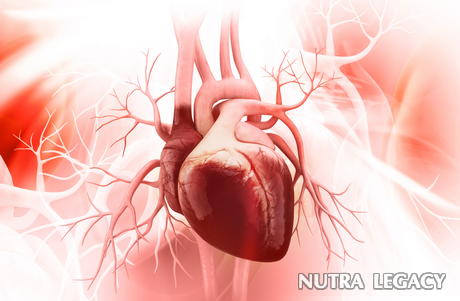Heart Ejection Fraction Measurement for Heart Disease Prevention

- Ventricular ejection fraction usually points to heart disease and the test can be done right in your doctor’s office
- Gall bladder disease and heart disease can have the same symptoms. Once your doctor rules out gall bladder disease, he or she will look at the possibility of heart problems
- The ejection fraction is the amount of blood your heart sends to the rest of the body through the circulatory system with each contraction
- A normal cardiac ejection fraction is between 45 and 60 percent. Any number higher or lower will require further investigation. If over 60 percent, it’s an indicator of high blood pressure
As most of us know, heart disease is the leading cause of death in the United States. Researchers are hard at work trying to find causes and cures for what is in effect an epidemic. One of the most indications of heart disease from a testing stand point is ventricular ejection fraction. Ventricular ejection fraction can be tested right in your doctor’s office. This is called an echocardiogram ejection fraction and is non invasive.
There are many reasons for your doctor to find out your ventricular ejection fraction. Gall Bladder disease and heart disease can both have some of the same symptoms and before a definitive diagnosis can be made your doctor may want to use a test called a HIDA ejection fraction test. A HIDA scan ejection fraction test measure the progress of an orally administered fluid as it passes through the biliary system. As the dye makes its way through the gall bladder it is ejected through a duct in to the liver. The HIDA scan ejection fraction test will measure the amount of fluid ejected in to the liver. The amount of testing liquid along with the rate at which it passes is the job of the HIDA scan ejection fraction test. The HIDA ejection fraction test is usually uncomfortable. The medicine in the test causes the gall bladder to contract which sometimes causes severe cramping. While uncomfortable, and even painful, the HIDA ejection fraction test is important to rule out gall bladder disease.
Once gall bladder disease has been ruled out, the doctors will look at the possibility of heart problems. A similar ejection fraction test or cardiac ejection test is performed by a cardiologist or in some cases your primary doctor, who will then pass on the results to your cardiologist. The most common way to measure your cardiac ejection fraction is with an echocardiogram ejection fraction test. This test is given with an ordinary echocardiogram. This test is also referred to as a ventricular ejection fraction test. While this is a non invasive and painless test, your doctor may wish to have additional tests done at a hospital. The ejection fraction is basically the amount of blood that your heart sends to the rest of the body through the circulatory system with each contraction. The amount of blood left in the heart chamber is the ejection percentage.
A normal cardiac ejection fraction is between 55 and 60 percent. Any number lower or higher needs further investigation by your medical team. If your ejection fraction is below 55 percent it is an indication that you may have significant risk of heart attack because of weakening of the heart muscle itself. If the heart is unable to pump an adequate amount of blood to the rest of your body other organs are in danger of collapse. If your ejection fraction number is over 60 percent it is an indicator of high blood pressure. Your cardiologist will be able to determine the appropriate course of treatment. Early intervention will help you avoid a possible tragedy.
A natural way to curb heart disease is through natural supplements. If you’re looking to improve your heart health and stabilize high blood pressure, look no further then Take One Multiple and Cardio Smart.
The information supplied in this article is not to be considered as medical advice and is for educational purposes only.
|
3 Responses to “Heart Ejection Fraction Measurement for Heart Disease Prevention” | ||||||||||||||





 11 Dec 2008
11 Dec 2008
Thank you for your website. I note that you had changed the ejection fraction rate within the article but it still shows incorrectly when searching for information. When searching on the Internet for "ejection fraction rate 45 percent" which is the information I received today from the cardiologist, the citation that comes up for your website states: "Heart Ejection Fraction Measurement for Heart Disease Prevention The ejection fraction is the amount of blood your heart sends to the rest of the body ... A normal cardiac ejection fraction is between 45 and 60 percent. ... nutralegacy.com/blog/general-healthcare/... - Cached" == Since your website is one of the first that appears on a list of websites mentioning ejection fraction I assumed that 45 percent was normal. I hope you can change the citation information. Thank youMay 13th, 2010 at 3:59 pm
Dear Dr. King-Lee Chu, Thank you for pointing this. We made a correction to an article! In good health, Prof. NutralegacyMay 12th, 2009 at 1:11 pm
Ms. Halen: I have a chance to visit your website. Please note that the lower limit of normal cardiac LV ejection fraction is 55%, not 45%. Regards. King-Lee Chu, MD, FACP, FACC 4/30/2009April 30th, 2009 at 9:06 pm